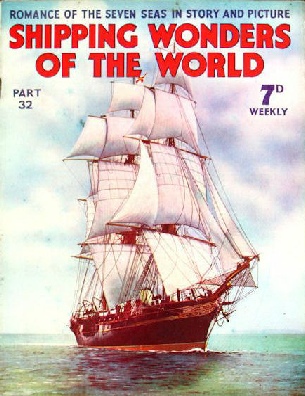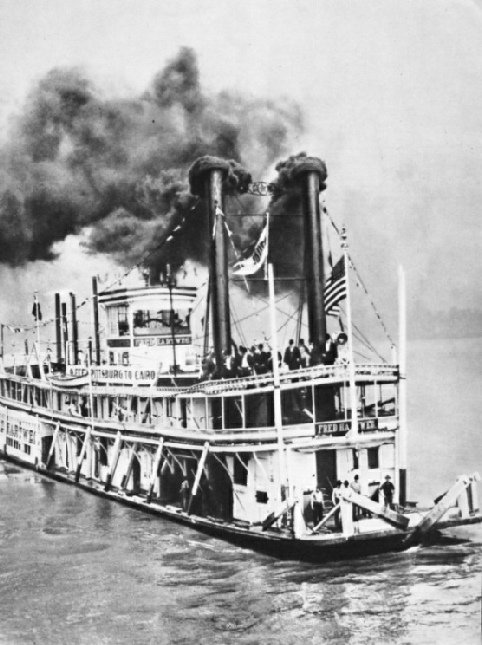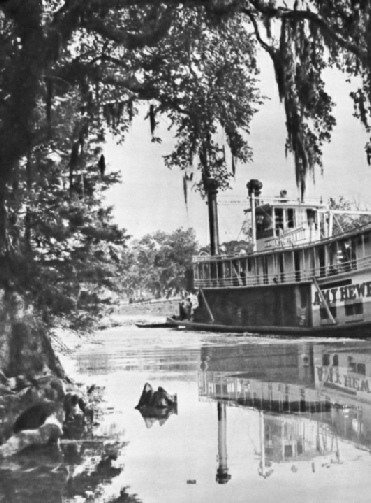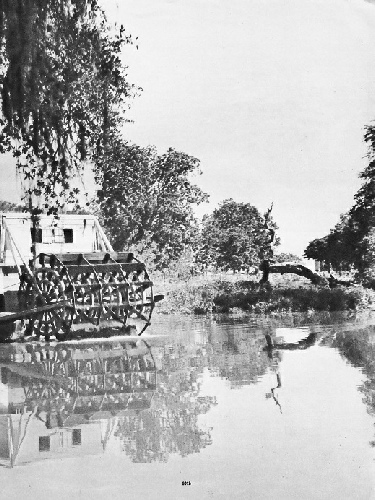
© Shipping Wonders of the World 2012-



Part 32
Part 32 of Shipping Wonders of the World was published on Tuesday 15th September 1936.
It included a centre photogravure supplement featuring ships on the Mississippi, which formed part of the article on the Mississippi “Father of Waters”.
The Cover
This week’s cover shows the Valhalla, a ship-rigged yacht built in 1892 at Leith for a private owner. She had a Thames measurement tonnage of 1490 and a gross tonnage of 1197. Her length was 239 ft 7 in, her beam 37 ft 2 in and depth 20 ft 8 in. After the war of 1914-18 she was sold to French owners and used as a cargo vessel, She foundered in December 1928.

Contents of Part 32
Pidgeon and the Islander
Concluding section of this article from part 31.
Fringes of the Fleet
More than two hundred units of the Royal Navy carry out duties as auxiliary ships. They include surveying ships, monitors, sloops, target ships and many other types which render invaluable assistance to the Navy as well as to navigation in general. Admiralty charts are compiled in many instances from information supplied by HM Surveying Ships. The work of these ships is invaluable. These survey ships are only one branch of the interesting auxiliary units of the Royal Navy.
This chapter is the eighth article in the series The Navy Goes to Work.
North Sea Single-Screw Coal Carrier
A description of the N C Monberg. She was built at Copenhagen by Burmeister and Wain in 1928 for the Danish Coal Company, a concern which regularly brings cargoes of coal to that port. The company has a fleet of four vessels of which the N C Monberg is the largest. She has a length of 275 ft 9 in, a beam of 41 ft 4 in, and a depth of 19 feet.
This is the twenty-fourth article in the series on Merchant Ship Types.
Mississippi - “Father of Waters”
One of the mightiest and most romantic rivers is the Mississippi. The first white man to see this great waterway was the Spanish explorer de Soto in 1542. It is the steamboat, however, that one really associates with the Mississippi, and navigation on the river reached its peak towards the middle of the nineteenth century. The Mississippi boat was akin to the river steamers of other parts of the world, yet had differences and peculiarities of her own. The romance of the Mississippi steamboats and show boats is not perhaps as great as it was, but hundreds of squat and elaborately decorated paddle steamers still ply on the muddy waters of the mighty river.
This chapter is the tenth article in the series on World Waterways.
Mississippi (photogravure supplement)
On A Quiet Reach of the Mississippi
ON A QUIET REACH of the Mississippi the paddles of the stern-wheelers cut through almost still water when reversing. The vessel in the picture is the Amy Hewes, 85 tons gross, built in 1903 at Franklin, Louisiana. She is 115 feet long, with a beam of 25 feet and a depth of 3 ft 3 in. Her engines develop 228 horse-power.
Contents of Part 32 (continued)
Secrets of the Sea
Modern scientific methods have revealed that the greatest depth of the sea far exceeds the height o the world’s highest mountain. From the middle depths, in regions of perpetual night, strange luminous fish and other creatures are brought to light. In this chapter, some of the wonderful specimens of fish that are brought up from the ocean depths are described, including the discoveries made in the two years’ voyage of the Danish surveying expedition under Professor Johann Schmidt in the Dana.
The Battle of Lepanto
In the sixteenth century the continuous assaults of the Moslem corsairs on Mediterranean trade routes aroused the Catholic nations of Southern Europe to action. On October 7, 1571, an Allied fleet routed the Turks off Lepanto (Navpaktos) in the Gulf of Corinth. By 1571 the Turks had been driven out of Spain and western Europe, but their ships were still a menace to Mediterranean traffic. Under the leadership of Don John of Austria, the combined fleets of the Holy League met the Turkish Navy in the Gulf of Corinth and inflicted a crushing defeat. Though Turkey still continued to dominate eastern Europe, her power at sea and in western Europe was gone for ever. One fact worthy of note in this connexion is that the type of Mediterranean galley used by both fleets at the Battle of Lepanto was in many ways similar to the type used by the Greek fleet at the Battle of Salamis in 480 BC. So well adapted was the type for the purposes of naval warfare in the Mediterranean that, though northern nations were inclined to despise it, it had persisted, little altered, for two thousand years.
This chapter is the second article in the series on Decisive Naval Actions. The article is concluded in part 33.

The Mississippi - Photogravure Supplement
DOWN RIVER AT FULL SPEED. From Pittsburgh, Pennsylvania, river steamers and tugs ply down the River Ohio to Cairo, Illinois, where the river flows into the Mississippi. The steamer illustrated is the Fred Hartweg, typical of the extravagantly decorated steamers that are becoming fewer and fewer with the advent of modern craft.


